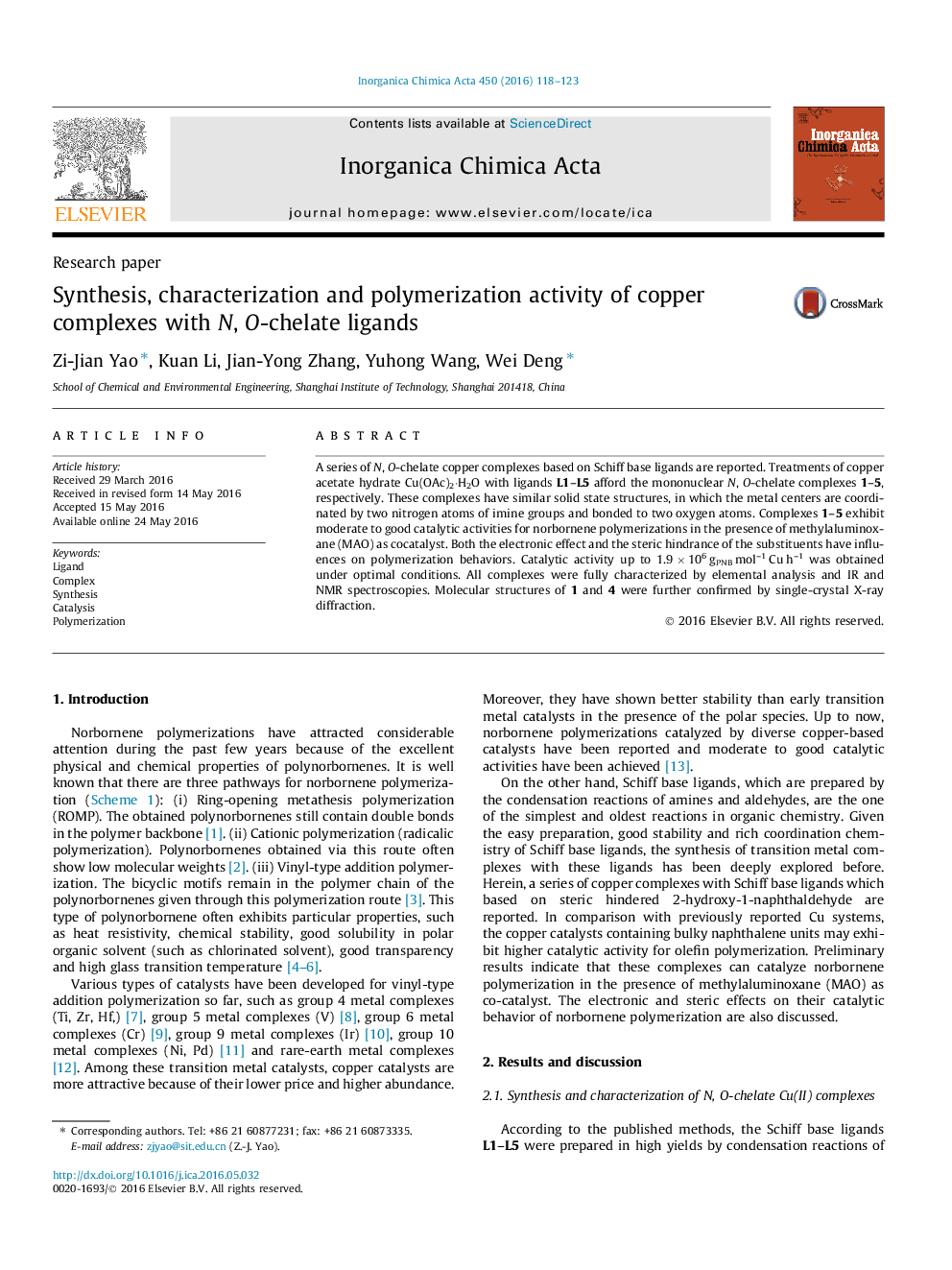| Article ID | Journal | Published Year | Pages | File Type |
|---|---|---|---|---|
| 1305377 | Inorganica Chimica Acta | 2016 | 6 Pages |
•High yields copper complexes were obtained through easy preparation.•Good polymerization activity of the N, O-chelate copper catalysts.•Steric and electronic effects on catalytic activity were investigated.•Structures of these complexes were confirmed by X-ray crystallography.
A series of N, O-chelate copper complexes based on Schiff base ligands are reported. Treatments of copper acetate hydrate Cu(OAc)2·H2O with ligands L1–L5 afford the mononuclear N, O-chelate complexes 1–5, respectively. These complexes have similar solid state structures, in which the metal centers are coordinated by two nitrogen atoms of imine groups and bonded to two oxygen atoms. Complexes 1–5 exhibit moderate to good catalytic activities for norbornene polymerizations in the presence of methylaluminoxane (MAO) as cocatalyst. Both the electronic effect and the steric hindrance of the substituents have influences on polymerization behaviors. Catalytic activity up to 1.9 × 106 gPNB mol–1 Cu h–1 was obtained under optimal conditions. All complexes were fully characterized by elemental analysis and IR and NMR spectroscopies. Molecular structures of 1 and 4 were further confirmed by single-crystal X-ray diffraction.
Graphical abstractA series of N, O-chelate copper complexes which exhibited moderate to good catalytic activity for norbornene polymerization by using methylaluminoxane (MAO) as cocatalyst have been reported. Both electronic and steric effects of the substituted groups on the chelate ligands have influence on the catalyst performance. Catalytic activity up to 1.9 × 106 gPNB mol–1 Cu h–1 was achieved under optimal conditions.Figure optionsDownload full-size imageDownload as PowerPoint slide
